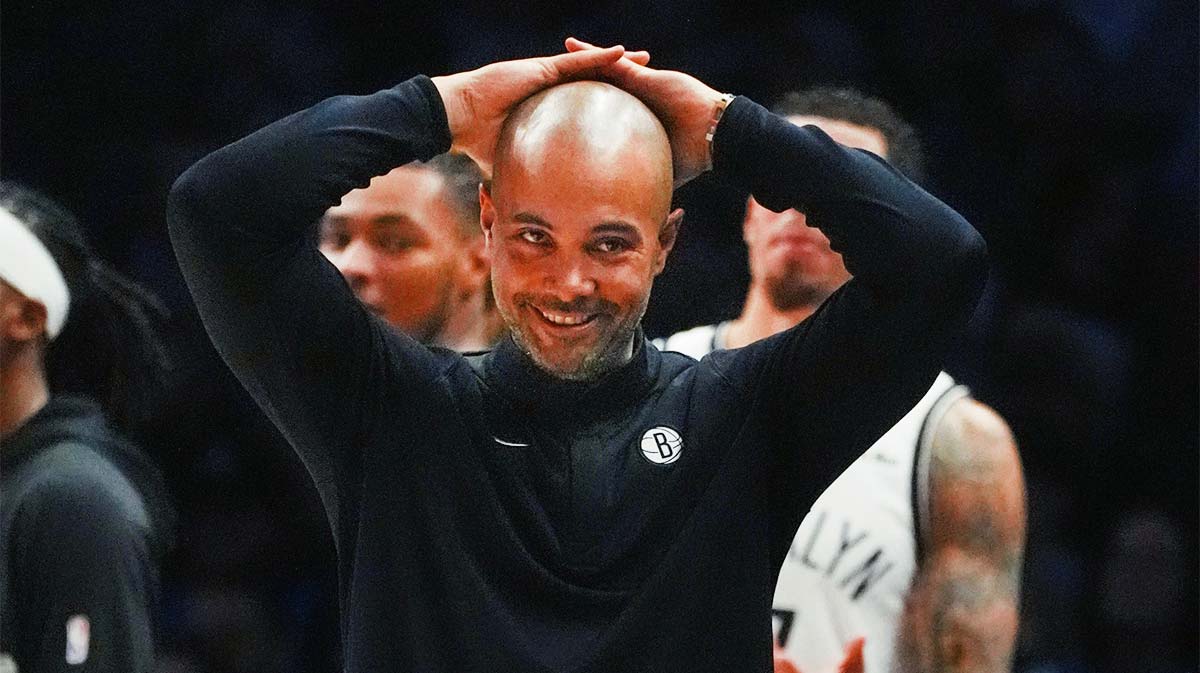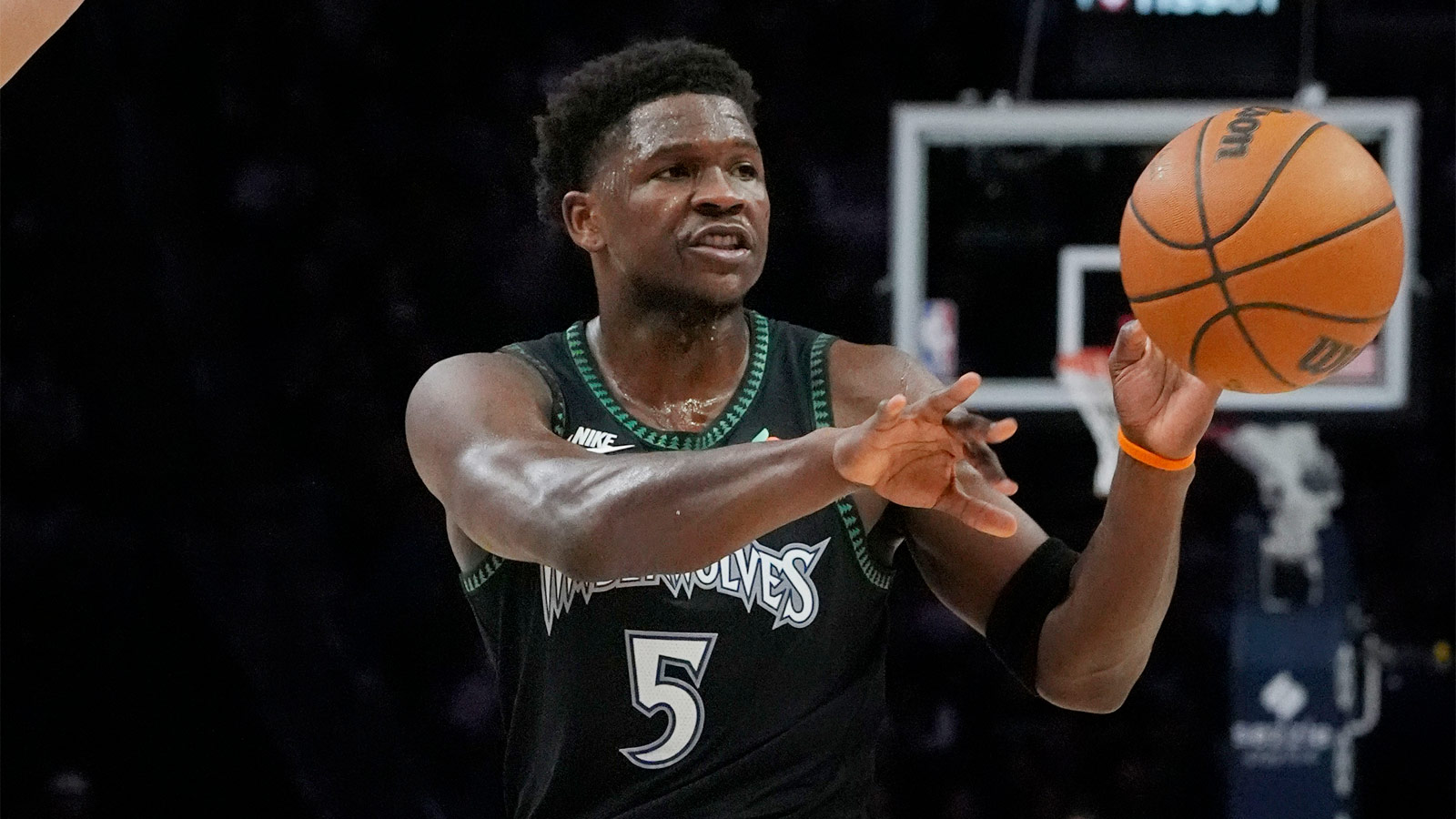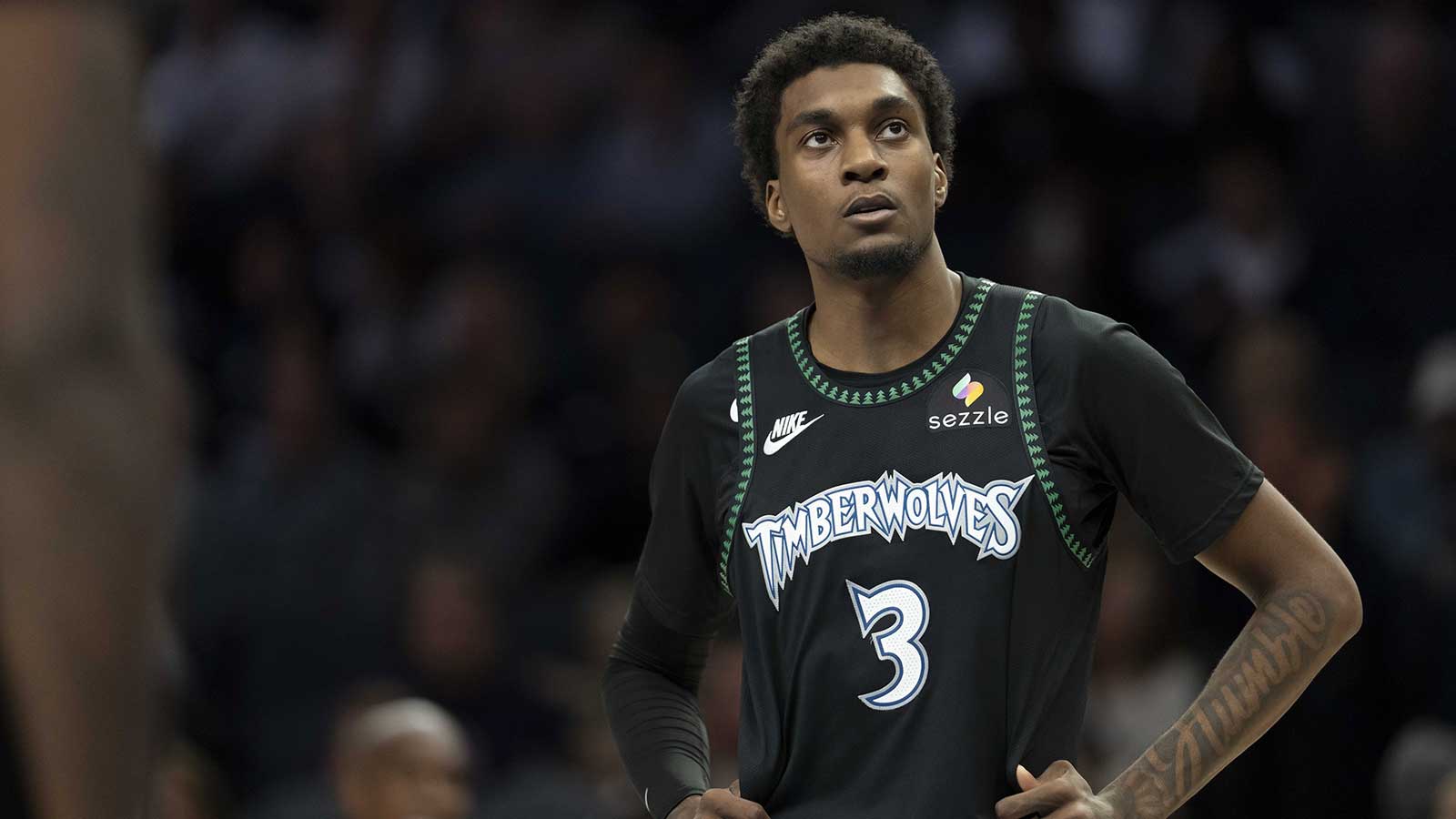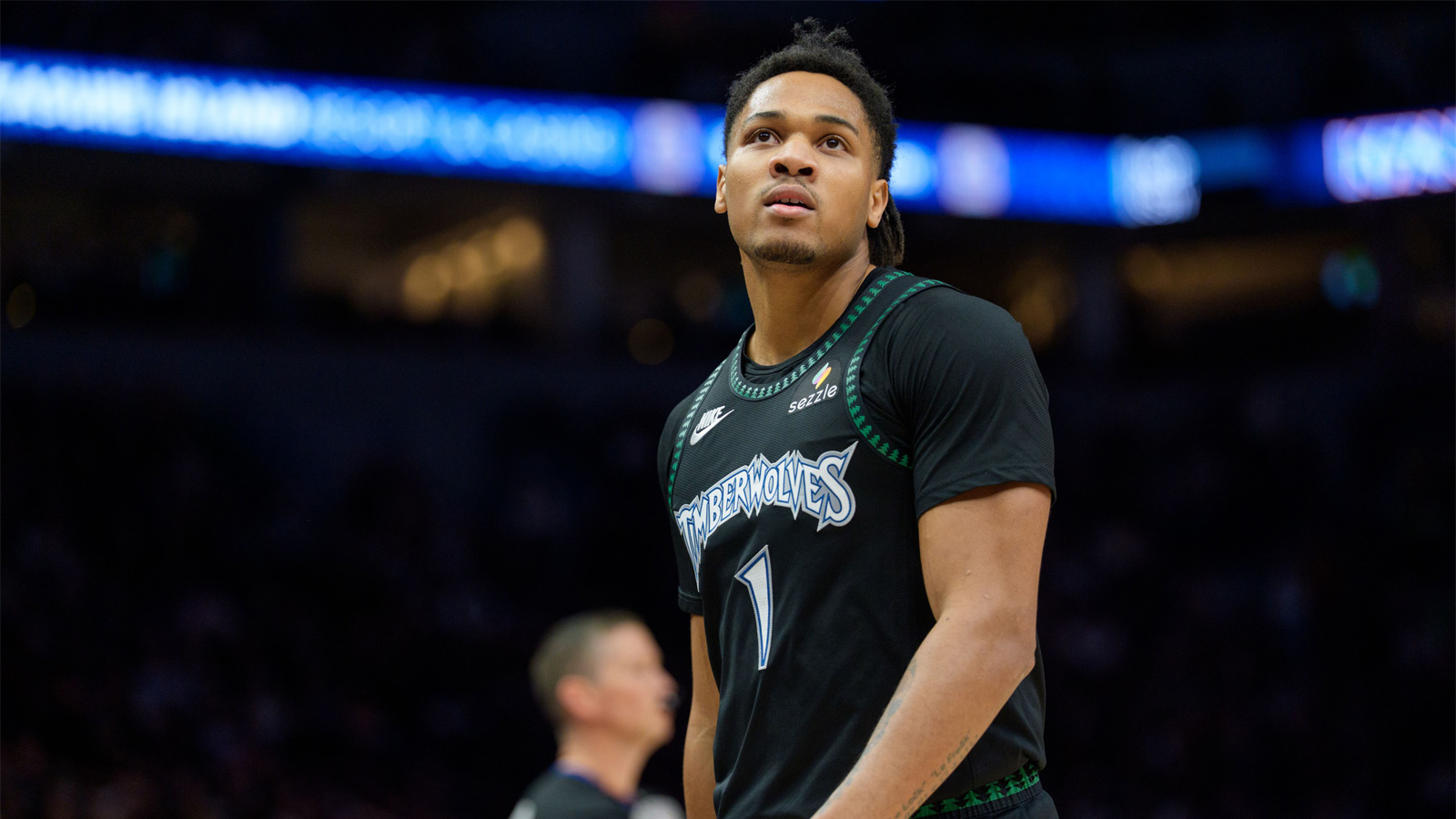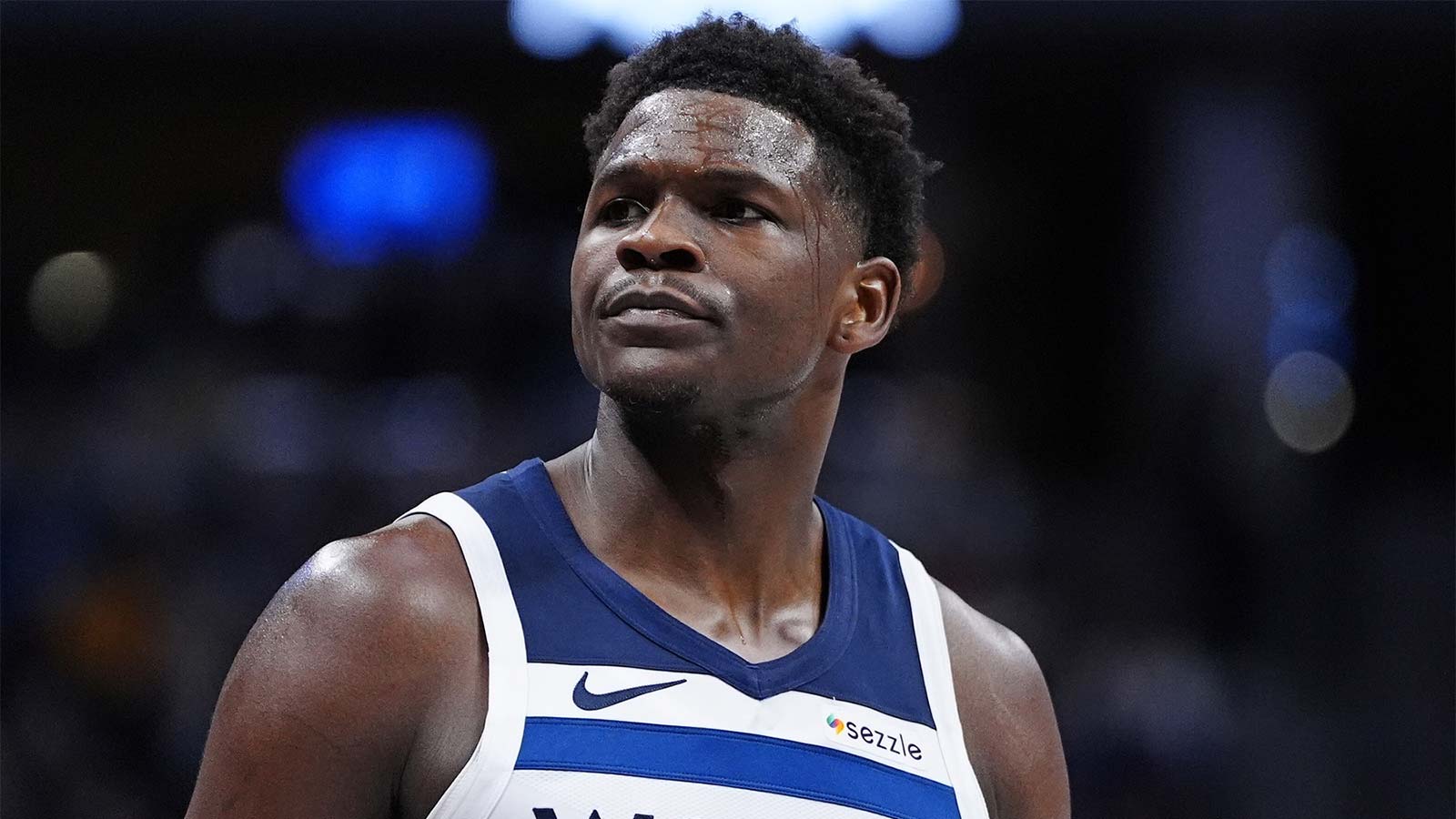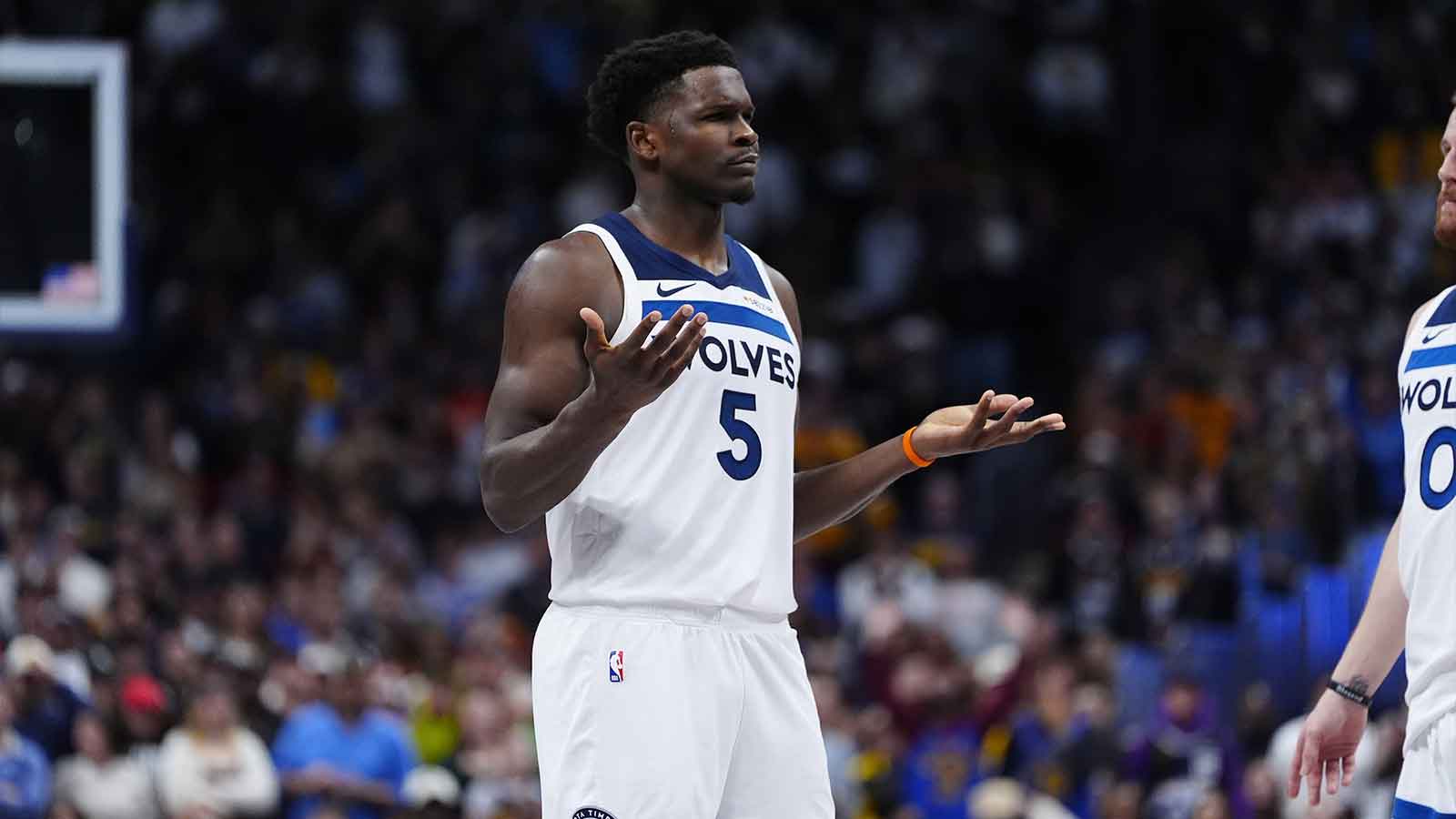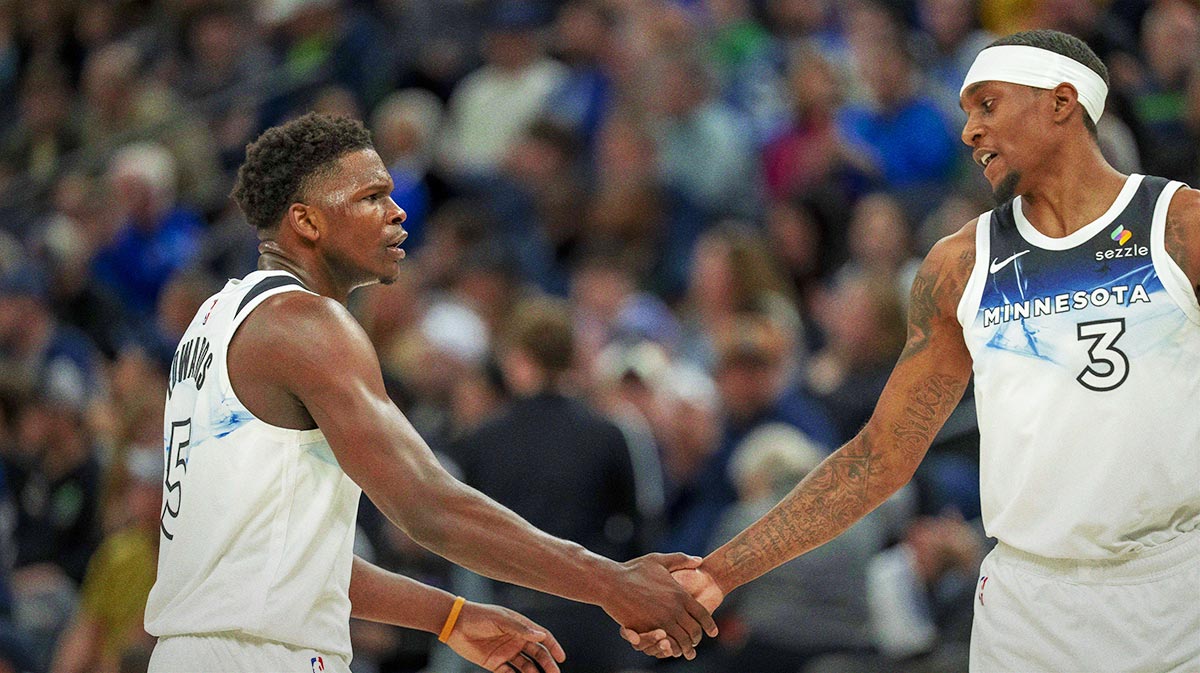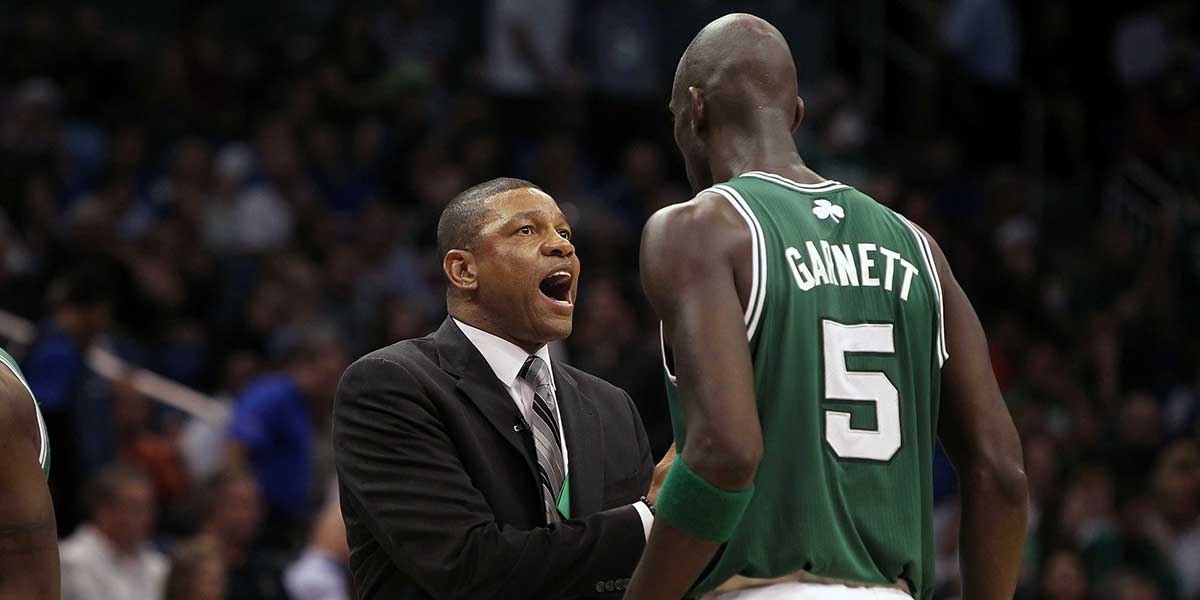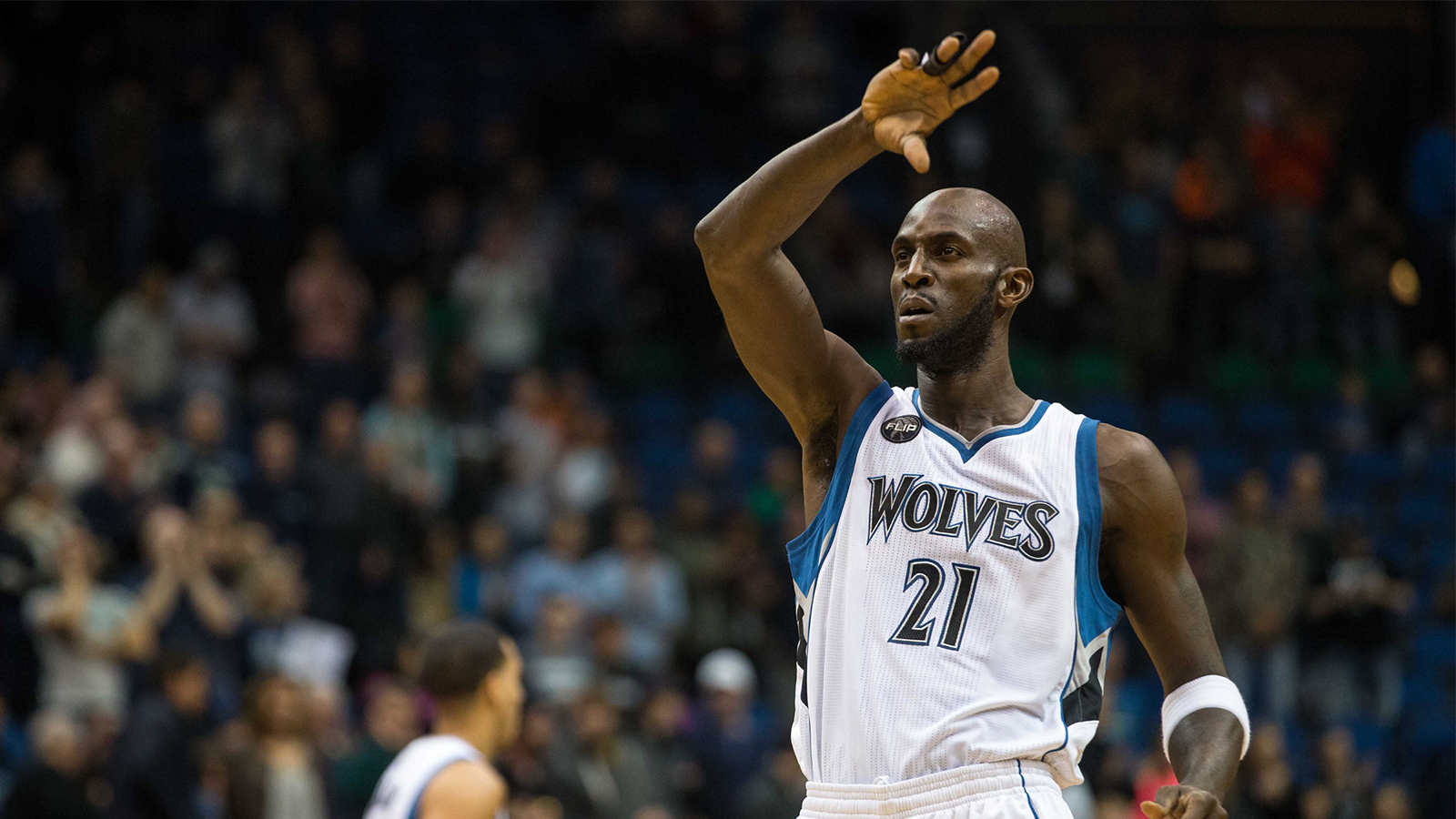With the Minnesota Timberwolves searching for a bounce back win, one of the hottest teams in the NBA was in town. The Houston Rockets, led by Western Conference coach of the month Ime Udoka, have been rolling. Ascending star guard Jalen Green has been at the center of Houston’s dominance with Alperen Sengun out due to injury.
The Timberwolves seemed overmatched early by the Rockets’ pace of play and switch-heavy defense. Minnesota mustered just 16 first-quarter points compared to 23 for Houston. A disappointing start to the game didn’t linger any further. The Timberwolves’ emphasis on ball movement and commitment to attacking mismatches, they were able to claw their way back into the game.
Their surplus of playmakers proved key to the 113-106 win over the Rockets on Tuesday night.
Kyle Anderson and the second quarter
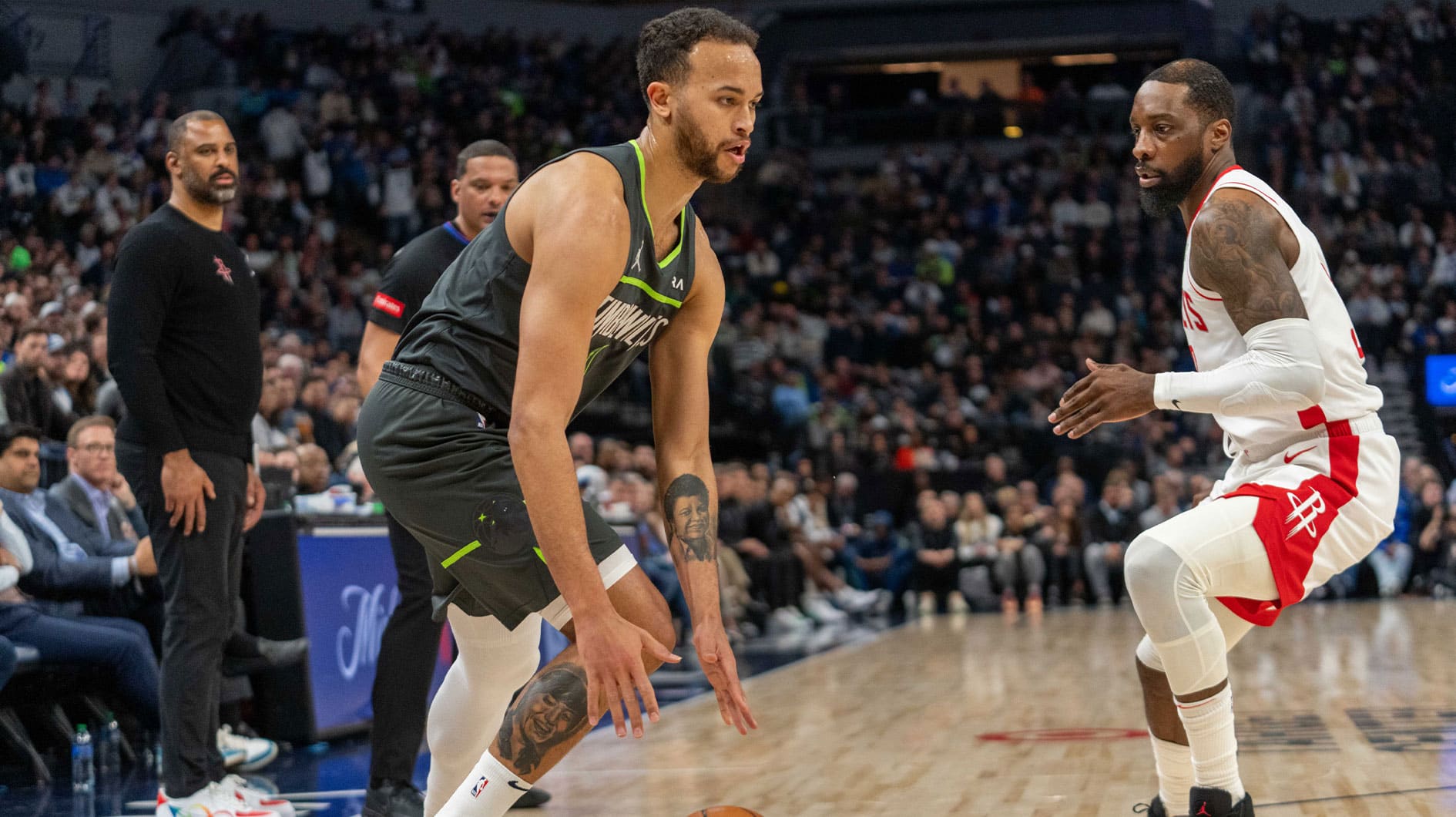
The Timberwolves’ Swiss Army knife on both ends is Kyle Anderson. His playmaking was pivotal in the second quarter after the Wolves’ slow start. At the beginning of the second quarter, Chris Finch dialed up Minnesota’s best halfcourt set play, their horns flare look. With this action, the Rockets’ switching defense became significantly overmatched.
The play starts with Kyle Anderson setting a screen for Mike Conley. Due to the switching, Rockets’ point guard Fred Van Vleet found himself now guarding the much bigger Kyle Anderson. With Rudy Gobert setting the flare screen for Slowmo, Van Vleet had a choice to make: fight through the flare screen or switch onto Minnesota’s center. The Rockets elected to allow their smallest player to switch onto the Timberwolves’ biggest.
Timberwolves’ horns-flare punishes Houston’s switching. Gobert vs FVV, good luck pic.twitter.com/PhPx1NC8fI
— Sheldon Wohlman (@3swohlman) April 3, 2024
Gobert capitalized on this matchup following a pinpoint Kyle Anderson entry pass. Typically, Minnesota utilizes a shooter in Anderson’s spot in this set to find easy pick and pop triples out of the action. However, Finch wisely opted for Slowmo’s playmaking in this situation.
In the second frame, Anderson’s presence completely turned the tide for the Timberwolves. Compared to their 16 first quarter points, Minnesota rattled off 38 points in the second behind unreal efficiency. Kyle Anderson racked up nine assists on the night. He also posted eight points and six rebounds on the night.
A triple-single isn’t the most impressive stat line, but Anderson was the heartbeat for the Timberwolves’ offense. A few highlight reel plays, including a filthy lob to Rudy Gobert, gave Minnesota just enough to beat the Rockets and protect home court.
Slowmo’s pass -> Gobert’s finish pic.twitter.com/66CC5s1vlD
— Sheldon Wohlman (@3swohlman) April 3, 2024
Jordan McLaughlin, Mike Conley and Monte Morris form a point guard trifecta
Coming into the year, it would’ve been hard to imagine multiple 6’1” point guards sharing the floor together. However, that has been the Timberwolves’ bread and butter over the last couple of weeks.
Jordan McLaughlin has turned into an absolute flamethrower despite being a career-long hesitant shooter. The bench spark-plug is shooting a remarkable 51.3% from deep, an unreal turnaround. While a lot of his looks are uncontested, the simple fact that he’s making open shots gives the Wolves’ offense life with him on the floor.
His quick pace, up-tempo style has given much-needed juice into the Wolves’ typically slower offense. McLaughlin now often shares the court with one of Mike Conley or Monte Morris. With J-Mac playing off the ball more than ever, he’s now freed up to be a playmaker and not just an offense initiator. In his 18 minutes of playtime on Tuesday night, the bench guard racked up seven assists and posted a game-high +17 plus-minus.
With Kyle Anderson and Jordan McLaughlin’s stellar play, Mike Conley’s role is simplified a bit. His off-ball capabilities make him a dangerous shooter off the catch while Monte Morris’ defensive tenacity, playmaking and scoring touch are all added bonuses. The Timberwolves, who are typically a massive team, have three small guards that provide some electricity into their offense.
Conley, McLaughlin and Morris give Chris Finch in-game options as to who should play. The Wolves’ head coach can now ride the hot hand more than ever as Minnesota’s surplus of playmaking calms their offense. Recording 29 team assists and not one player with double-digits paints a great picture to how the Wolves’ offense, predicated on ball movement, is at its best when their attacking the gaps with timely decision-making and passing.








